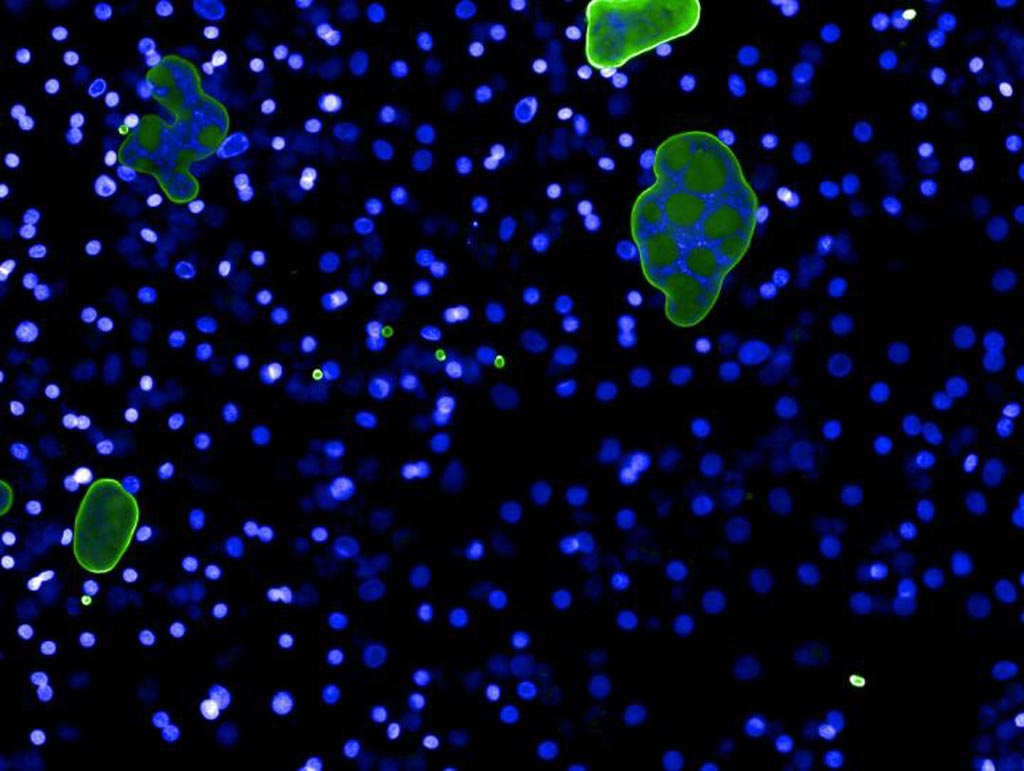New Method Developed for Malaria Parasite Tissue Culture
By LabMedica International staff writers
Posted on 23 May 2018
A new method for maintaining the liver form of the malaria parasite in tissue culture is expected to lay the foundation for next-generation malaria control and elimination.Posted on 23 May 2018
Malaria liver stages represent an ideal therapeutic target with a bottleneck in parasite load and reduced clinical symptoms; however, current in vitro liver stage models for Plasmodium vivax and P. falciparum lack the efficiency necessary for rapid identification and effective evaluation of new vaccines and drugs, especially targeting late liver-stage development and hypnozoites.

Image: The large green structures are the P. vivax parasites surrounded by human liver cells (Photo courtesy of Dr. John Adams, University of South Florida).
The term “hypnozoite” is derived from the Greek words hypnos (sleep) and zoon (animal). Hypnozoites are dormant forms in the life cycles of certain parasitic protozoa that belong to the phylum Apicomplexa (Sporozoa) and are best known for their probable association with latency and relapse in human malarial infections caused by P. ovale and P. vivax. Consequently, the hypnozoite is of great biological and medical significance.
In order to improve the means available of studying the liver stage of malaria, investigators at the University of South Florida (Tampa, USA) developed a 384-well plate culture system using commercially available materials, including cryopreserved primary human hepatocytes and cell culture reagents.
The investigators reported in the May 9, 2018, online edition of the journal Nature Communications that in their culture system hepatocyte physiology was maintained for at least 30 days and supported development of P. vivax hypnozoites and complete maturation of P. vivax and P. falciparum schizonts.
Reducing culture handling to a 384-well microtiter format promoted key morphological and functional characteristics of native in situ hepatocytes and allowed for high-resolution imaging, seamless image acquisition with faster imaging speed, and integration of automated high-content image analysis.
"Almost all of the current strategies are focused the blood-stage of malaria - after the person has already become infected," said senior author Dr. John Adams, distinguished health professor at the University of South Florida. "But, in order to eradicate this disease, you need to block the cycle of reinfection and the most efficient way to do that is by blocking the parasite from coming into the person. This has not been possible previously because the methods of studying the liver stage have just not been there. Our technique makes that work possible."
Related Links:
University of South Florida













